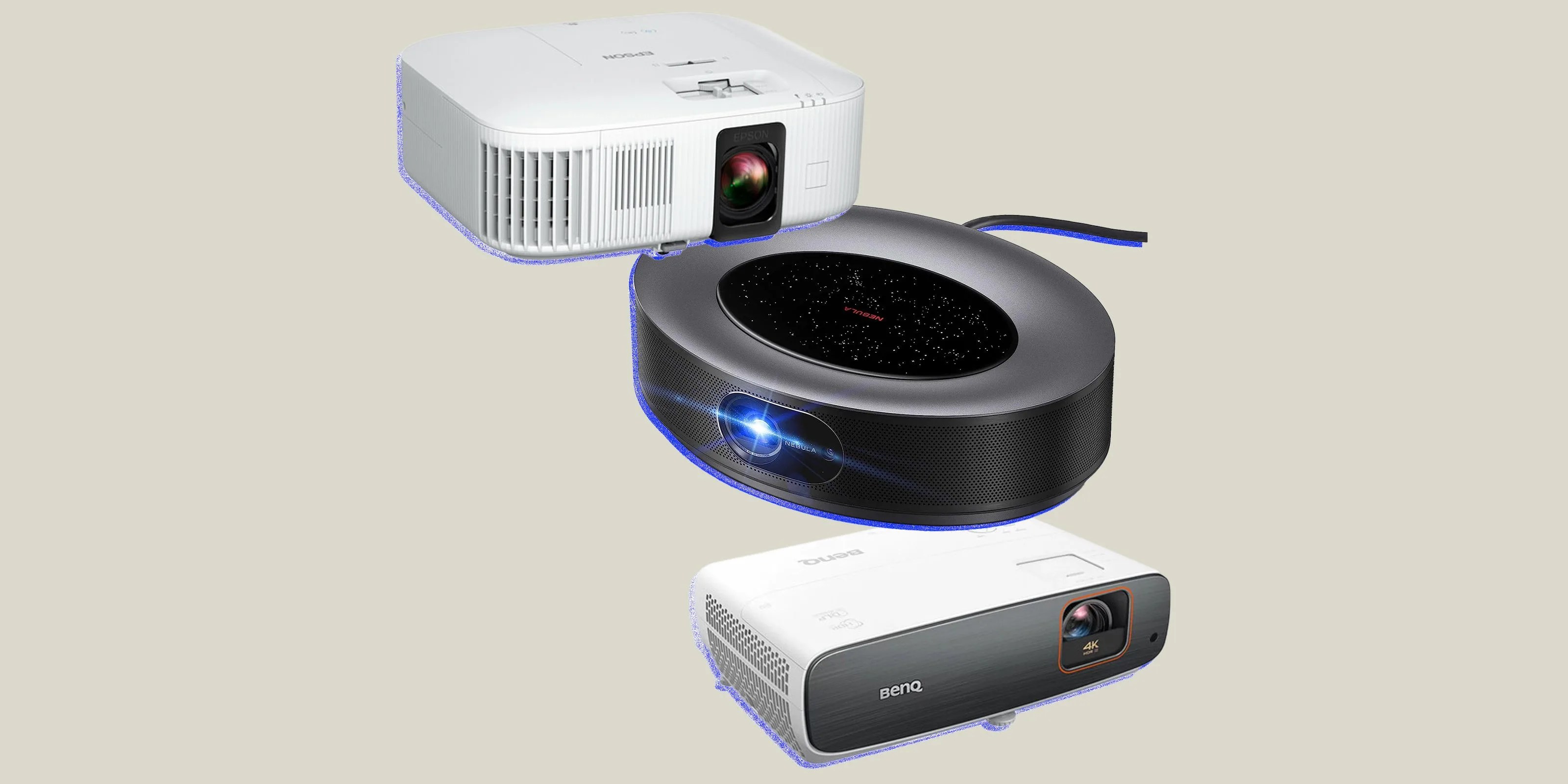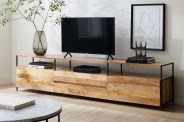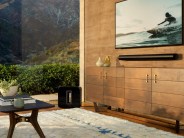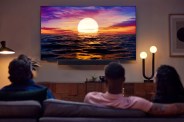There are several advantages to buying a protector over a TV. The biggest, naturally, is screen size. Most home-theater projectors can produce a picture that’s 100 inches or bigger. If you want a comparably sized television, it’d cost as much as a car — maybe even more.
The picture that projectors can produce is easier on the eyes, thanks to that the fact that reflecting light off white or gray backgrounds (the color of your projector screen) is less fatiguing than the light produced by LED and OLED TVs. Plus, projectors aren’t as big of a home-decor eyesore. There’s no need to have a big box hanging on the wall.
Products in the Guide
Of course, there are reasons why most people go the traditional route and settle for a TV. A It’s a lot cheaper, and you can easily watch it during the day. A projector, meanwhile, requires a room with very little ambient light. To optimize picture quality, you should also consider buying a projection screen alongside your projector, which will help refract both shadows and highlights. And that’s an extra cost.
Then there’s the issue of installation: projectors require the whole room to be arranged around them. They need to be positioned in the back of the room, most likely against the wall, in such a way that accommodates seats and the screen size. You have to plan for your other devices — cable box, gaming console, Apple TV or DVD player — and you’ll have to know the intricacies of your room beforehand, much more so than you would with a TV.
In previous years, 1080p projectors were probably the best bet for most people who wanted a really big home theater screen. Even though the image quality wasn’t the greatest, they were affordable. 4K projectors, on the other hand, were sort of similar to OLED TVs, in that they were really expensive when the technology first came out, but over the last few years the prices have dropped and have become reasonable for consumers to buy.
Today, 4K projectors are still more expensive than most 4K TVs — and the best 4K projectors, which can produce a pristine picture in most lighting conditions, still come with a staggering price tag. But you can now buy one within touching distance of $1,000. Here’s everything you need to know before you make the plunge.
Is It True 4K?
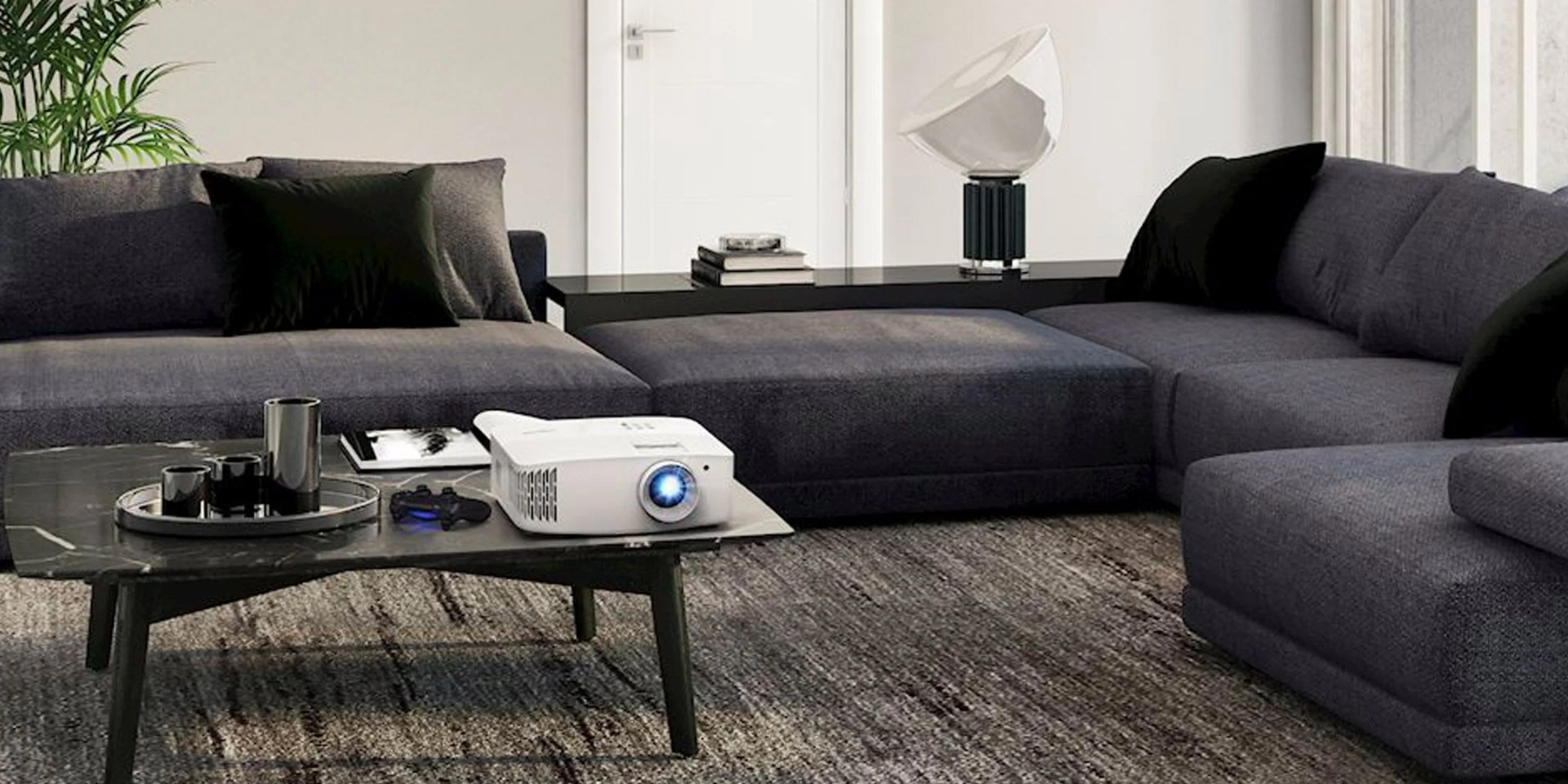 Optoma
OptomaAn important clarification to make is that almost all “affordable” 4K projectors, which fall under $2,000, aren’t exactly producing the same picture quality as 4K TVs. Most of these projectors use a different kind of processing chip to create a lower resolution. “The chips that make the image aren’t actually 4K,” writes CNET’s Geoffrey Morrison. “Or to be more specific, the chips don’t have 3,840×2,160 discrete pixels. Instead, they use lower-resolution imaging chips and some additional method — basically, a trick — to create 4K onscreen.”
This upscaling trick is called 4K Enhancement Technology (4Ke), and it diagonally shifts each pixel in an HD image to double the resolution. Most projectors that cost between $1,000 and $1,500 are going to take advantage of 4Ke technology. So does it matter? Yes and no. As Morrison goes on to explain, the image successfully tricks your brain so that the picture looks more detailed than 1080p. It likely won’t look quite as pristine as the 4K picture you get on a nice 4K TV by Samsung, LG or Sony. But in the right conditions with the proper setup, affordable 4K projectors can hold their own.
What to Look for in a 4K Projector
Brightness
Generally, the brighter the picture, the better it’ll be. Brightness, which is measured in lumens, is also what enables projectors to fight ambient light. The brighter a projector, the better it’ll work in rooms that aren’t completely black.
Operating System and Wi-Fi
A lot of new-age projectors come with Wi-Fi support and their very own operating system, the combination of which allows you to stream content from apps like Netflix or HBO Max without connect an external device.
Contrast Ratio
This is the range of brightness between the whites and black images, and the general rule of thumb is: the higher the contrast ratio, the more detail you’re going to see in the image. A higher contrast ratio means the projector is going to be able to produce more shades of a color, and thus you’re going to see a more true-to-life image.
Throw Ratio
This is a metric for measuring the throw distance of the projector. It’s generally measured as D/W, which is the distance (D) the projector is going to throw, divided by the image’s width (W). Most projectors have a 2.0 throw ratio, meaning if the projector is 12 feet away from the screen, it’ll project a 6-foot image.
Zoom Ratio
This refers to how adjustable the image size is, because you don’t want the distance away from the screen to be the only factor of image size. 1.2 is a pretty standard zoom ratio, meaning you can adjust the image size by 20-percent by adjusting the zoom lens.
Lamp Life
The life of your projector’s light bulb is surprisingly important. In fact, according to Projector Central, it’s “the biggest cost of projector ownership” as replacement bulbs can cost several hundred dollars. Lamp life is measured in an “hour rating” or the hours it’s expected to last.
Why You Should Trust Us
We’ve been writing about and reviewing home theater and audio products — including televisions, soundbars, speakers and headphones (and more) that run the gamut from consumer to hi-fi — for near-on a decade. We also work with major brands and talk to experts within the home theater space. The below selections of affordable 4K projectors are a combination of products that we’ve had hands-on experience with as well as products that are made by brands we trust.
The Best 4K Projectors:
BenQ TK860i
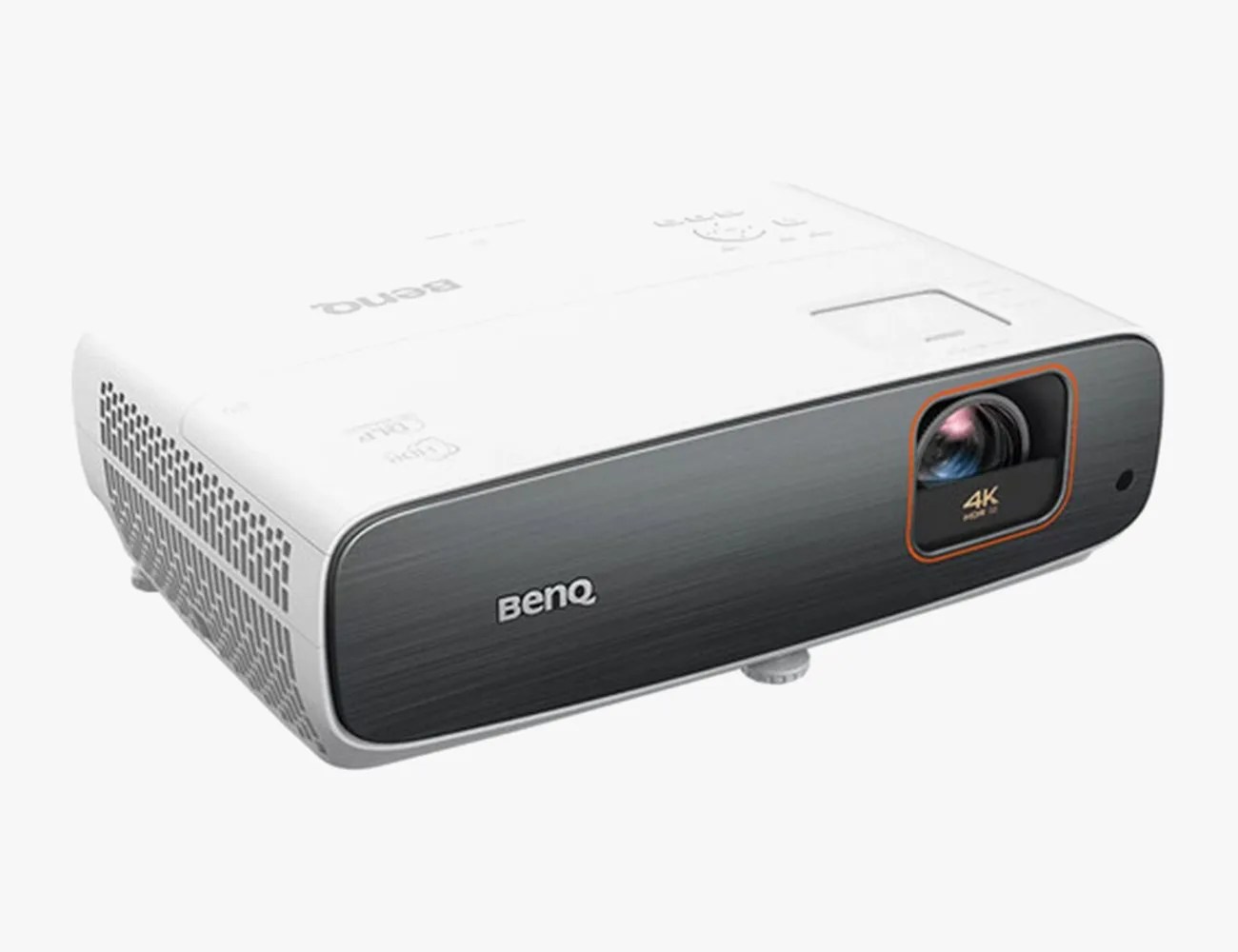 B&H
B&HBenQ TK860i
- Screen Size: up to 100 inches
- Brightness: 3,300 lumens
- Contrast Ratio: 50,000:1
- Throw Ratio: 1.13 – 1.47:1 (range)
- Zoom Ratio: 1.3x
- Lamp Life: up to 10,000 hours
Released in 2023, the BenQ TK860i is one of our favorite new 4K projectors. It’s a standout because it’s a great fit for brighter rooms, comes with an Android TV operating system for easy streaming, and it has a pretty impressive built-in speaker system. As far as picture quality, the TK860i delivers a true 4K image and it supports the newest high dynamic range technologies including HDR10 and HLG (but not Dolby Vision or HDR10+) — so it looks sharp. Additionally, it comes with and has three HDMI connections, so hooking up to a gaming console or soundbar is pretty straightforward.
Epson HC2350
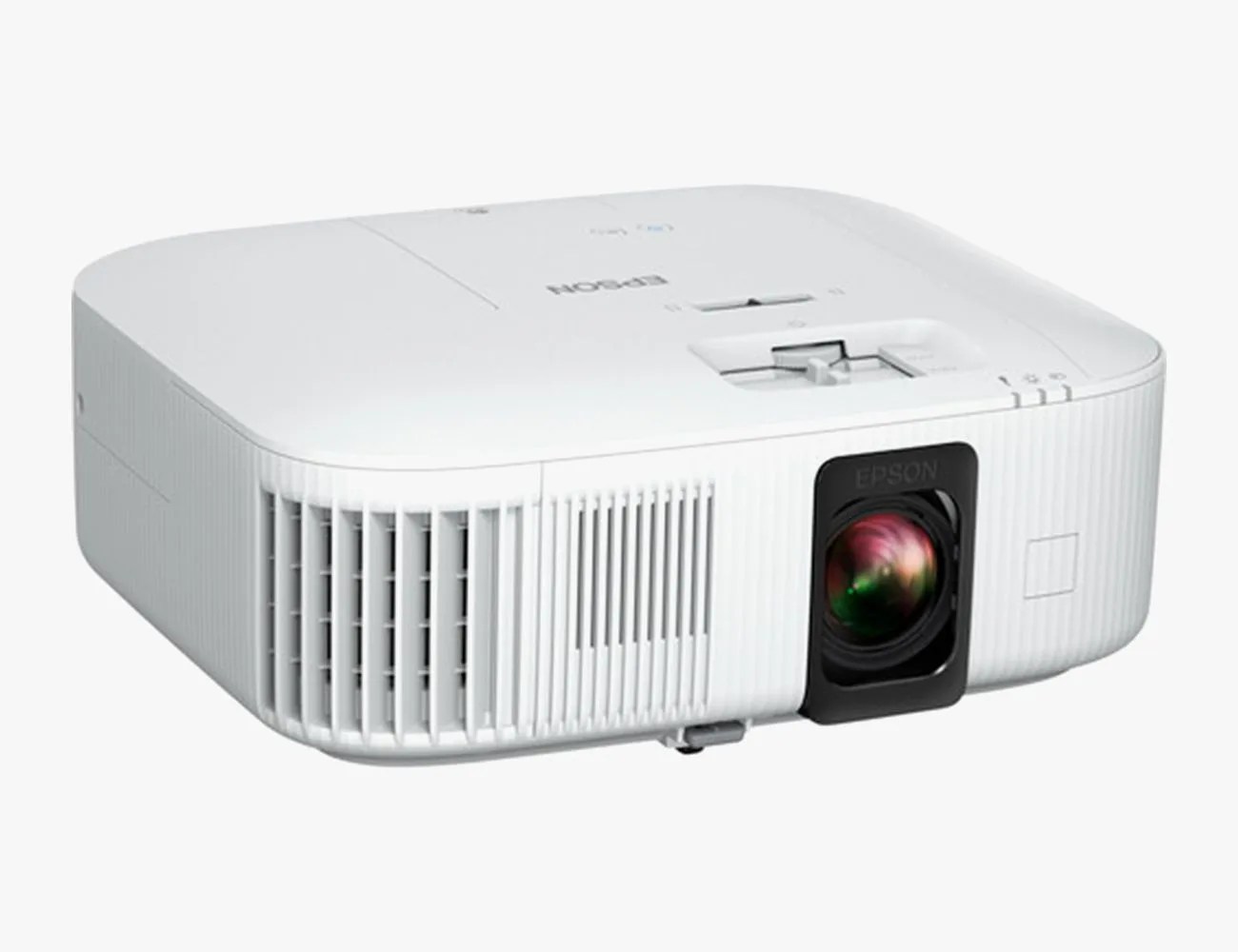 B&H
B&HEpson Home Cinema 2350
- Screen Size: up to 500 inches
- Brightness: 2,800 lumens
- Contrast Ratio: 35,000:1
- Throw Ratio: 1.32:1 – 2.15:1 (range)
- Zoom Ratio: 62x
- Lamp Life: up to 4,500 hours
The HC2350 is the most affordable 4K projector that the Epson – one of the biggest names in the space — has made to date. It’s a solid entry-level option as it delivers a true 4K image and comes with a built-in Android operating system. It comes with two HDMI connections for your various peripherals and it does have a built-in speaker (although it won’t blow you away).
BenQ X3000i
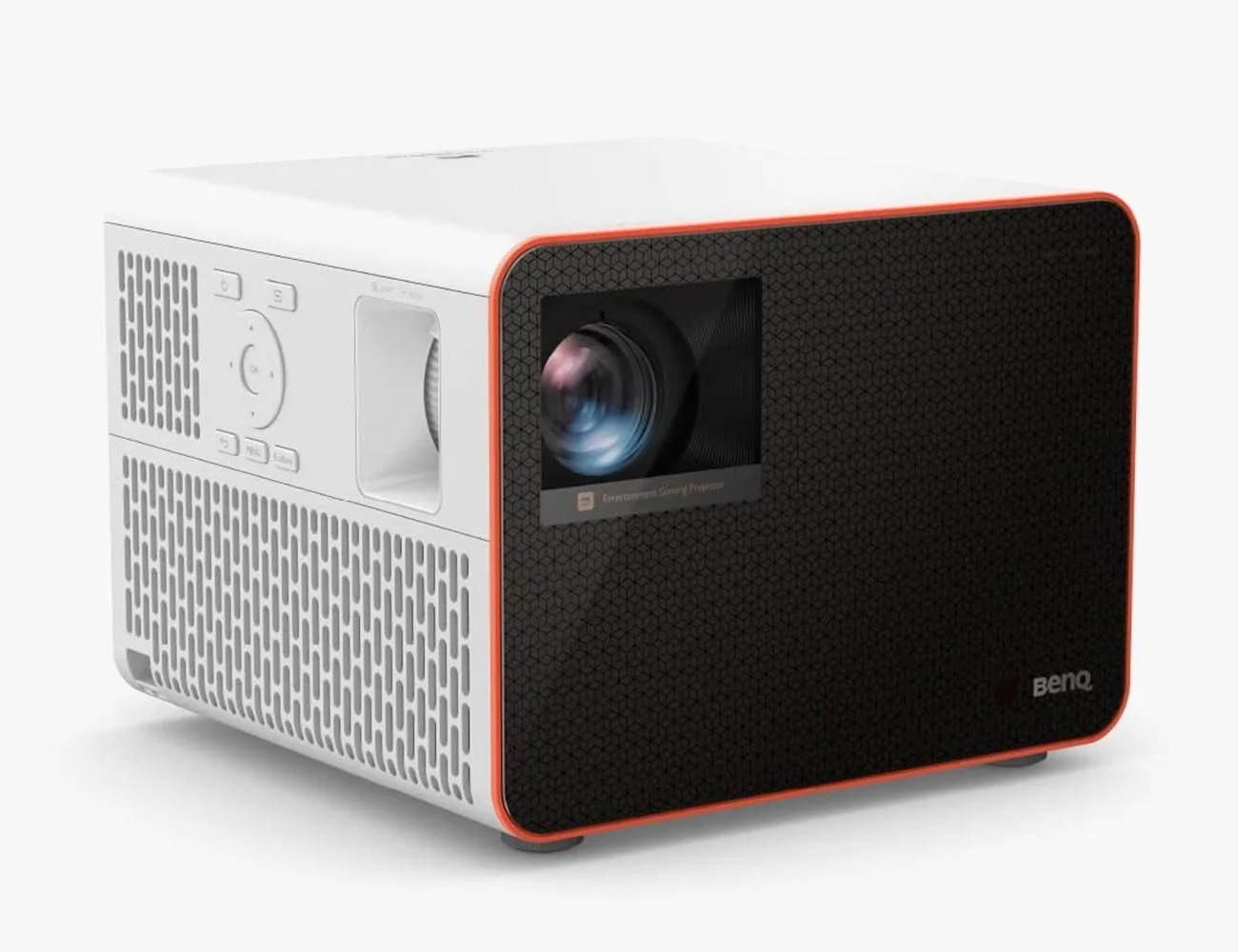 BenQ
BenQBenQ X3000i
-
$1,999.99 (10% off)
- Screen Size: up to 200 inches
- Brightness: 3,000 lumens
- Contrast Ratio: 500,000:1
- Throw Ratio: 1.15 — 1.5:1 (range)
- Zoom Ratio: 1.3x
- Lamp Life: up to 30,000 hours
Released in March 2022, the BenQ X3000i is a 4K projector that was designed with gamers in mind. It has several different low-latency gaming modes and a robust sound system — which is why the BenQ X3000i is so big, weighing over 14 pounds — that can play 3D immersive audio. It also comes with an Android TV dongle for streaming your favorite shows while not gaming.
Anker Nebula Cosmos Max 4K
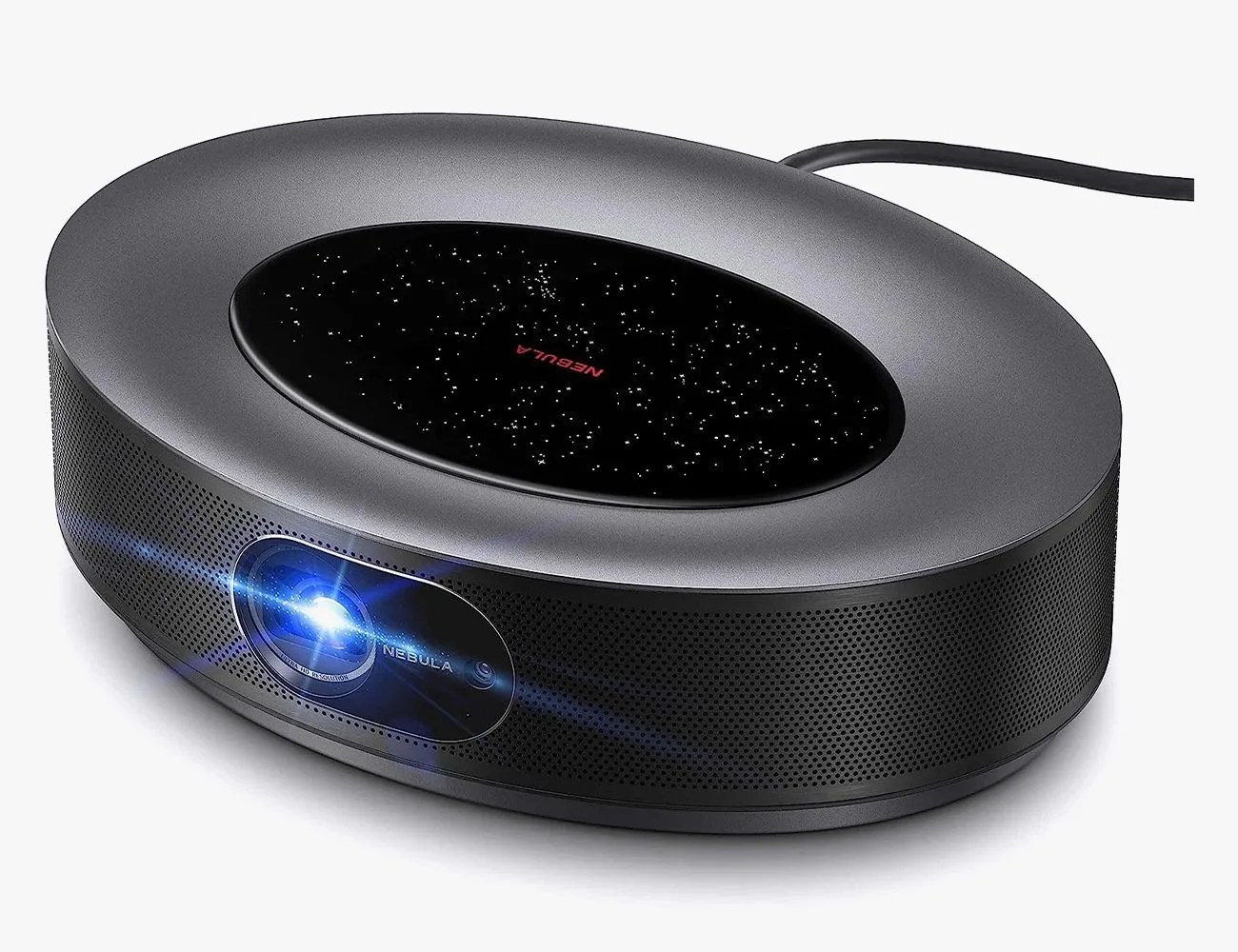 Amazon
AmazonAnker Nebula Cosmos Max 4K
-
$1,599.99 (16% off)
- Screen Size: up to 150 inches
- Brightness: 1,500 lumens
- Contrast Ratio: 100,000:1
- Throw Ratio: 1.2 (range)
- Zoom Ratio: N/A
- Lamp Life: up to 30,000 hours
The Nebula Cosmos Max 4K is unique to this list because it’s designed to be moveable. It’s lightweight (weighing size pounds) and can easily be transported from room to room or into the backyard. It is not battery powered, however, and will need to constantly be plugged into the wall. Due to its size, the quality of its built-in speakers isn’t the best so you’ll want to connect it to a separate speaker system or soundbar. It comes with an Android operating system so you can stream shows without needing to connect your smartphone or laptop.
Optoma UHD35x
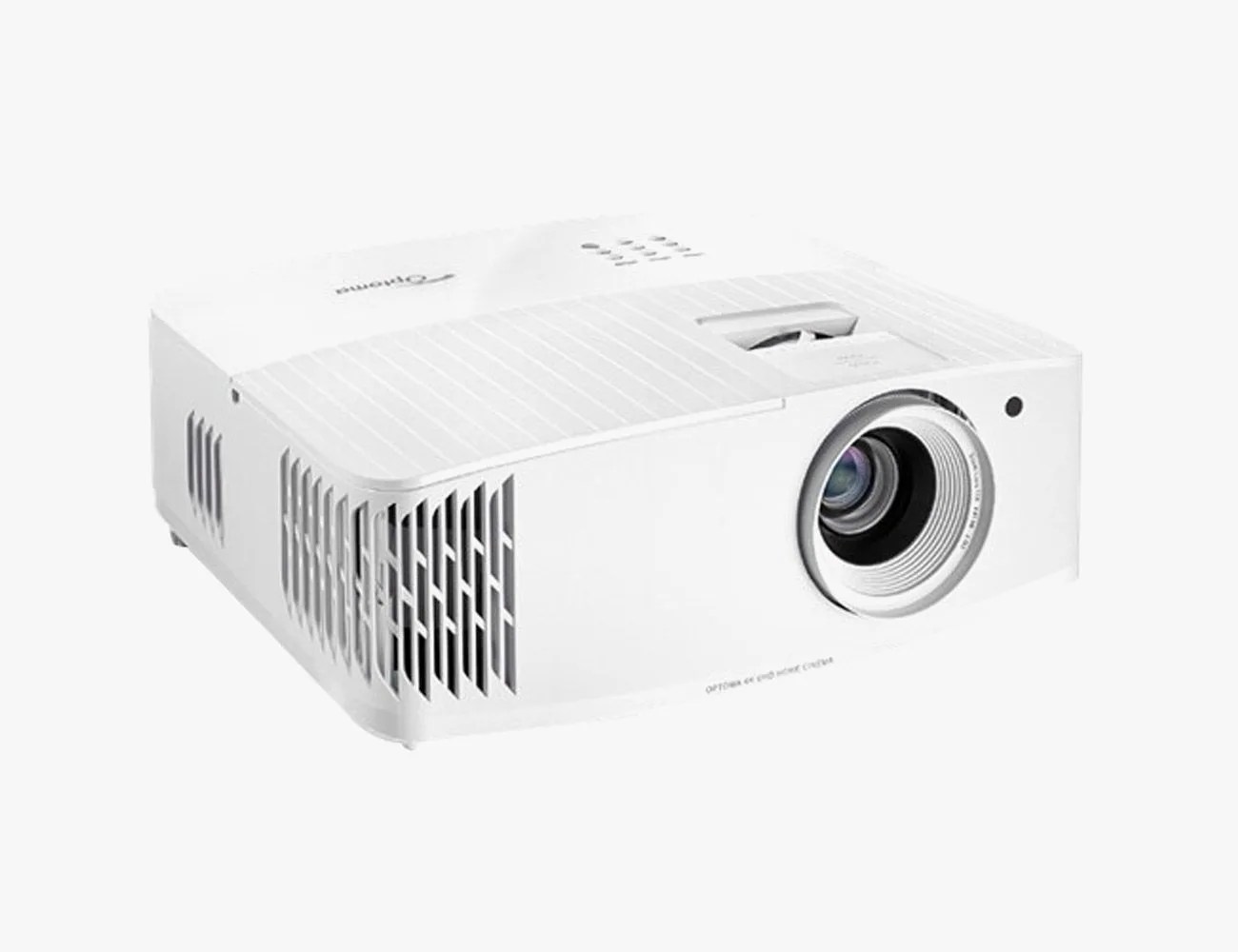 Optoma
OptomaOptoma UHD35x
-
$1,349.00 (11% off)
- Screen Size: up to 100 inches
- Brightness: 3,600 lumens
- Contrast Ratio: 1,000,000:1
- Throw Ratio: 1.5 – 1.66 (range)
- Zoom Ratio: 1.1 – 2.0 (range)
- Lamp Life: up to 4,000 hours
The Optoma UHD35x is a solid 4K projector that you can buy for right around $1,000. It delivers a bright and accurate picture, and it comes at a price which isn’t too far away from non-4K projectors. The main downside is that there’s no lens shift and the zoom range isn’t very adjustable, meaning there’s little wiggle room in terms of where you can place the projector in a room.
Xgimi Horizon Pro
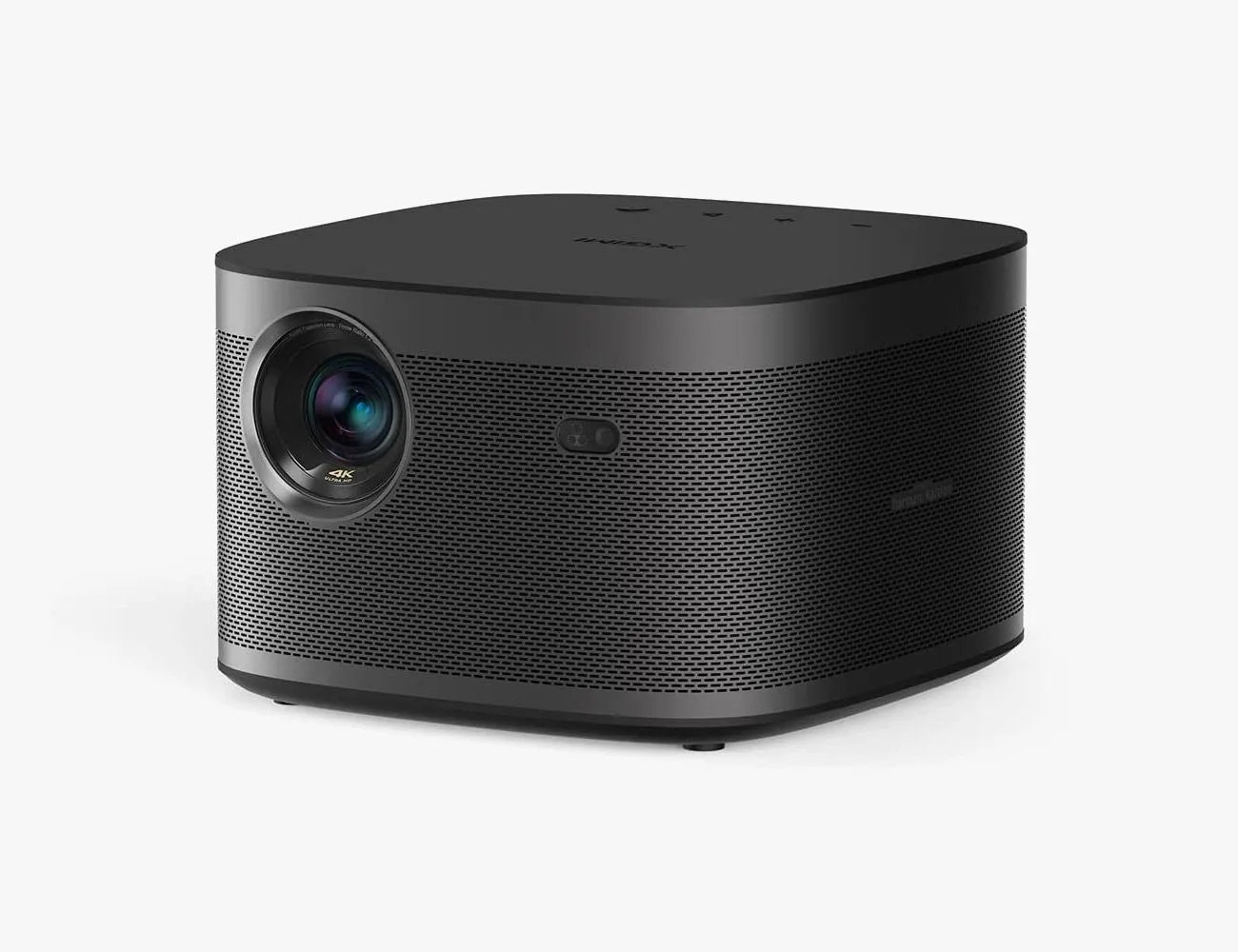 Xgimi
XgimiXgimi Horizon Pro
-
$1,699.00 (12% off)
- Screen Size: 30’’ – 300’’
- Brightness: 2,200 lumens
- Contrast Ratio: N/A
- Throw Ratio: 1.2 : 1
- Zoom Ratio: N/A
- Lamp Life: up to 25,000
The Xgimi Horizon Pro is a great all-around 4K projector that comes with a lot of higher-end features. It has built-in Wi-Fi and runs an Android TV 10.0 operating system, so you can stream whatever you like without an external device (as long as you’re connected to Wi-Fi). It supports HDR (HDR10 and HLG) and 3D content, so the picture is going to really come to life. It has built-in autofocus. And it packs some pretty serious Harman Kardon speakers. The only real downside is that it’s pricier than most.
